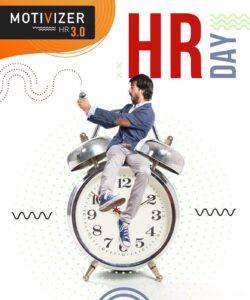How to manage employee benefits? What is the concept of cafeteria compensation?

An increasing number of employers are becoming aware of the role that additional non-wage benefits play in motivating employees. However, few of them know how to manage and account for them, and that’s where cafeteria systems come into play. So, what is cafeteria compensation exactly? What are the possibilities and benefits of using employee benefits?
- What is cafeteria compensation?
- What are the most popular non-wage benefits?
- How to manage non-wage benefits?
- Settling benefits with the Social Benefit Fund
What is a Cafeteria-Style Compensation?
A few years ago, if an employee was asked what motivated them the most to continue working, they would respond with an additional bonus or raise. Today, although it is still an extremely important factor, the ability to work remotely, praise for well-done work, or the choice of additional non-monetary benefits are also significant.
The idea behind cafeteria-style systems is to allow employees to choose benefits that are not part of their compensation. This differs from traditionally perceived motivational systems because it gives employees full freedom of choice in the benefits that interest them. The selection of benefits within the system is wide and varied, but it can be adjusted to the needs of the company by choosing specific groups of benefits.
This is exactly what cafeteria-style compensation is – the employer, by collaborating with a company offering motivational systems, makes benefits available to employees for their use at their discretion as part of a bonus or reward for achievements in the workplace.
What are the most popular non-wage benefits?
It should be noted that the cafeteria system offers a very wide range of benefits, which may not always fully meet the needs of the company. Therefore, there is an option to tailor the offer to a specific enterprise – in this case, the employer, the ordering party, can decide what benefits will be made available to employees.
This can be determined based on the needs of employees, but it is easiest to choose from the most popular benefits and observe which ones are chosen most frequently. Currently, the most popular benefits are additional, private medical care, insurance, sports packages, language courses, movie tickets, and discounts at restaurants.
How to manage non-wage benefits?
A company that uses cafeteria systems has access to software that facilitates the management of benefits. Such a program allows for the selection of benefits, the topping up of “virtual wallets” of employees, through which they can independently decide on benefits, as well as an convenient way of settling accounts.
In practice, the employee himself “manages” his own benefits, although the HR department must supervise everything using an intuitive program. It is also very important to verify after a few months which benefits are selected. If something is not popular, you can give it up and offer a new group of benefits in exchange.
Management of Non-Salary Benefits through Cafeteria Systems
One advantage of cafeteria systems is that they assist in the accounting of benefits from the Social Benefits Fund. Not every employer knows what can be accounted for in this fund, but with the help of cafeteria systems, the risk of making errors (and thus incurring a high fine on the company) is minimal.
It’s also worth noting what benefits can be funded under the Social Benefits Fund: cultural and recreational (e.g. movie tickets), rest and relaxation (vacations, children’s summer camps), sports and recreation (e.g. sports cards), child care, material aid, and housing assistance. Other benefits must be paid for from the company’s working capital, which is also taken into account by cafeteria systems.

